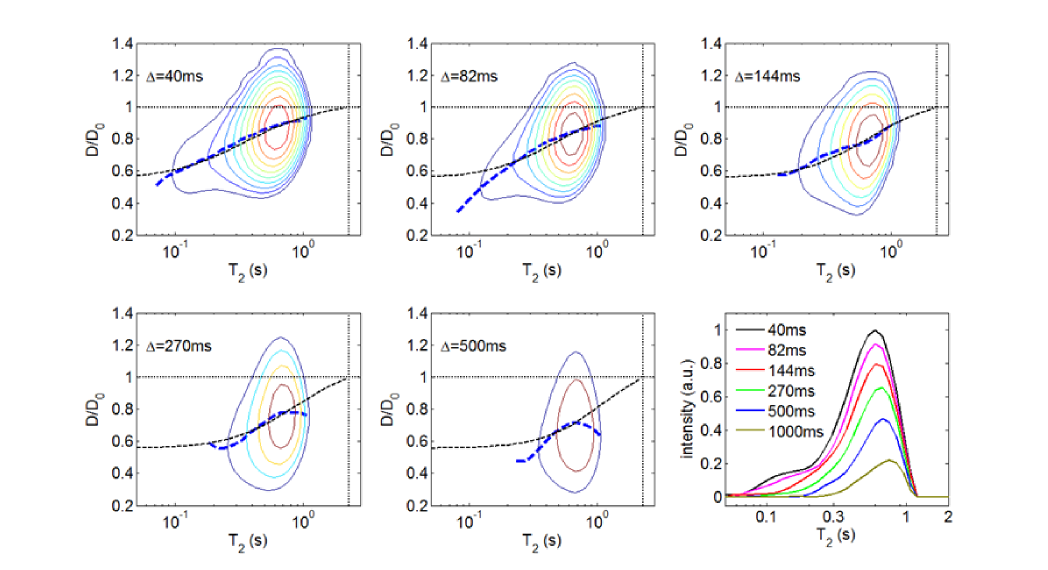Self-Calibrating Low-Field NMR Measurements of Pore Size.
- 1. Schlumberger-Doll Reserach, Cambridge, United States
- 2. University of North Carolina, Department of Physics and Astronomy, Chapel Hill, United States
Portable and bench-top NMR relaxation measurements provide an invaluable analytical tool to infer sample microstructure and composition, enabling the non-destructive analysis of a wide range of materials from cements and rocks, to emulsions and food. However, a weakness in these measurements is that their quantification of pore size typically requires calibration with other analytical techniques. The determination of pore size with NMR relaxometry relies on the relation that a pore's contribution the relaxation rate is proportional to the surface-to-volume ratio of the pore ( Δ 1/T2 = ρ S/V ) [2] and in practice ρ, the surface relaxivity, must either use 'typical' values for the sample type or for accurate measurements be calibrated by other techniques such as Mercury Injection Capillary Pressure measurements. Such destructive analyses are undesirable for rare or valuable samples or impossible to obtain as is often the case in NMR well logging.

[1] Blümich, B., J. Perlo, and F. Casanova. "Mobile single-sided NMR." Progress in Nuclear Magnetic Resonance Spectroscopy 52.4 (2008): 197-269.
[2] R.L. Kleinberg, NMR well logging at Schlumberger, Concepts in Magnetic Resonance, 13 (2001) 396-403.
[3] Zielinski, L., R. Ramamoorthy, C. Cao Minh, K. Al Daghar, R. H. Sayed, and A. F. Abdelaal, 2010, Restricted diffusion effects in saturation estimates from 2D diffusion-relaxation NMR maps: Presented SPE Annual Conference
